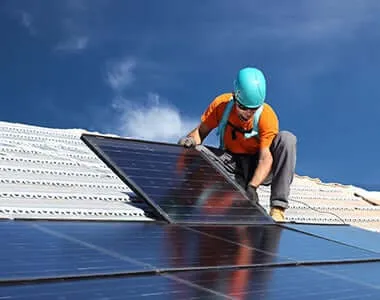solar inverter working principle
The Working Principle of Solar Inverters
Solar inverters play a crucial role in converting the energy harnessed from sunlight into usable electricity for homes and businesses. They are an essential component of any solar photovoltaic (PV) system, transforming direct current (DC) generated by solar panels into alternating current (AC), which is the standard electrical current used in most appliances and the electrical grid. Understanding how solar inverters work is pivotal for anyone interested in solar energy systems.
At the core of a solar inverter’s function is the conversion process itself. Solar panels generate electricity in the form of DC, which means the current flows in one direction. However, most electrical devices and the power grid operate on AC, where the flow of current alternates direction periodically. The inverter's primary job is to ensure that the DC from the solar panels can be effectively converted into AC so that it can be used in household appliances or fed back into the grid.
The Conversion Process
The conversion from DC to AC involves a few steps. Initially, the DC electricity is fed into the inverter, where it enters a series of circuit components. The inverter often employs a transformer to facilitate the transformation. It utilizes a method known as pulse width modulation (PWM) to create an AC output. By rapidly switching the DC current on and off, the inverter essentially simulates the sine wave form characteristic of AC electricity.
Once the inverter generates AC power, it must ensure that the output is synchronized with the frequency and voltage of the grid or the electrical system in use
. This is essential for safety and efficiency, preventing any power failures or damages to electronic equipment.solar inverter working principle

Types of Solar Inverters
There are mainly three types of solar inverters string inverters, microinverters, and power optimizers. String inverters are the most common and are typically used in residential installations where solar panels are installed in a series, or string. Microinverters, on the other hand, are attached to individual solar panels, allowing for better energy capture, especially in partially shaded conditions. Power optimizers work similarly, enhancing the performance of string inverters by optimizing the output of each panel without converting the DC to AC at the panel level.
Additional Functions
Modern solar inverters also include built-in monitoring capabilities, allowing users to track the performance of their solar systems in real time. Many inverters provide data through smartphone apps or computer interfaces, making it easier to identify issues or inefficiencies. Some advanced inverters even offer smart-grid capabilities, enabling energy storage options or integration with other renewable energy sources.
Conclusion
In summary, solar inverters are integral to any solar energy system, transforming the solar panels' DC electricity into usable AC power. Their various types and advanced features enhance energy efficiency, making solar energy a viable and sustainable option. Understanding the working principle of solar inverters not only helps in selecting the appropriate system for your needs but also underscores the importance of these devices in the global shift towards renewable energy. As technology continues to evolve, solar inverters will likely become even more efficient and essential in our pursuit of sustainable energy solutions.
-
Unlocking Energy Freedom with the Off Grid Solar InverterNewsJun.06,2025
-
Unlock More Solar Power with a High-Efficiency Bifacial Solar PanelNewsJun.06,2025
-
Power Your Future with High-Efficiency Monocrystalline Solar PanelsNewsJun.06,2025
-
Next-Gen Solar Power Starts with Micro Solar InvertersNewsJun.06,2025
-
Harnessing Peak Efficiency with the On Grid Solar InverterNewsJun.06,2025
-
Discover Unmatched Efficiency with the Latest String Solar InverterNewsJun.06,2025







